Related Research Articles

A power outage is the loss of the electrical power network supply to an end user.
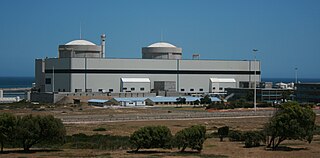
Koeberg Nuclear Power Station is a nuclear power station in South Africa and the only one on the entire African continent. It is located 30 km north of Cape Town, near Melkbosstrand on the west coast of South Africa. It is owned and operated by the country's state-owned electricity public utility, Eskom.

A rolling blackout, also referred to as rota or rotational load shedding, rota disconnection, feeder rotation, or a rotating outage, is an intentionally engineered electrical power shutdown in which electricity delivery is stopped for non-overlapping periods of time over different parts of the distribution region. Rolling blackouts are a last-resort measure used by an electric utility company to avoid a total blackout of the power system.
Eskom Hld SOC Ltd or Eskom (Afrikaans: Elektrisiteitsvoorsieningskommissie) is a South African electricity public utility. Eskom was established in 1923 as the Electricity Supply Commission (ESCOM). Eskom represents South Africa in the Southern African Power Pool. The utility is the largest producer of electricity in Africa, and was among the top utilities in the world in terms of generation capacity and sales. It is the largest of South Africa's state owned enterprises. Eskom operates a number of notable power stations, including Matimba Power Station and Medupi Power Station in Lephalale, Kusile Power Station in Witbank, Kendal Power Station, and Koeberg Nuclear Power Station in the Western Cape Province, the only nuclear power plant in Africa.
Kulula.com and commonly referred to as Kulula was a South African low-cost airline, operating on major domestic routes from O. R. Tambo International Airport and Lanseria International Airport, both serving the city of Johannesburg. The airline's headquarters were located at Bonaero Park, Kempton Park, Ekurhuleni, Gauteng. The name 'Kulula' comes from the Nguni languages of Zulu and Xhosa, meaning It's easy. Kulula suspended operations on 1 June 2022 pending securing of additional funding The company was placed into liquidation on 9 June 2022.
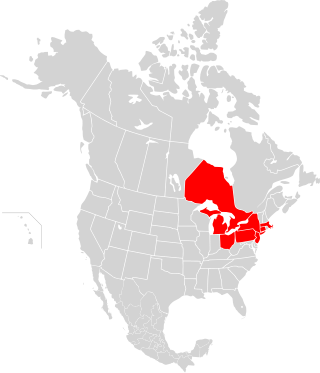
The Northeast blackout of 2003 was a widespread power outage throughout parts of the Northeastern and Midwestern United States, and most parts of the Canadian province of Ontario on Thursday, August 14, 2003, beginning just after 4:10 p.m. EDT.

Crime in South Africa includes all violent and non-violent crimes that take place in the country of South Africa, or otherwise within its jurisdiction. When compared to other countries South Africa has notably high rates of violent crime and has a reputation for consistently having one of the highest murder rates in the world. The country also experiences high rates of organised crime relative to other countries.
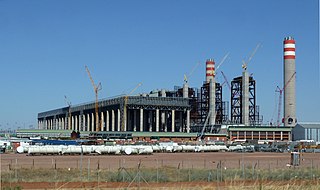
Medupi Power Station is a dry-cooled coal-fired power station built by Eskom near Lephalale in Limpopo province, South Africa. The station consists of 6 generating units with a nameplate capacity of 764 MW each bringing the total installed capacity of 4,584 MW.
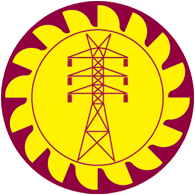
The Ceylon Electricity Board - CEB, is the largest electricity company in Sri Lanka. With a market share of nearly 100%, it controls all major functions of electricity generation, transmission, distribution and retailing in Sri Lanka. It is one of the only two on-grid electricity companies in the country; the other being Lanka Electricity Company (LECO). The company earned approximately Rs 204.7 billion in 2014, with a total of nearly 5.42 million consumer accounts. It is a government-owned and controlled utility of Sri Lanka that takes care of the general energy facilities of the island. The Ministry of Power and Energy is the responsible ministry above the CEB. Ceylon Electricity Board (CEB), established by the CEB Act No. 17 of 1969, is under the legal obligation to develop and maintain an efficient, coordinated and economical system of electricity supply in accordance with any licenses issued.
Kriel Power Station in Mpumalanga, South Africa, is a coal-fired power plant operated by Eskom. It is located about 4 km from Matla Power Station just outside the town of Kriel.
Majuba Power Station between Volksrust and Amersfoort in Mpumalanga, South Africa, is a coal-fired power plant operated by Eskom. Majuba is Eskom's only power station that is not linked to a specific mine and it receives its coal from various sources. This was due to an error in geotechnical engineering core drilling which did not identify that the proposed local coal mine was under solid bedrock.
Tutuka Power Station in Mpumalanga, South Africa, is a coal-fired power plant operated by Eskom. It is a twin sister to Duvha Power Station.
Several major power outages have occurred in the country of Malaysia.
Two severe power outages affected most of northern and eastern India on 30 and 31 July 2012. The 30 July 2012 blackout affected over 400 million people and lasted about 13.5 hrs. During that period, it was the largest power outage in history by number of people affected, beating the January 2001 blackout in Northern India. Similar conditions caused a blackout on the next day, which remained the largest power outage in history as of April 2024. The outage affected more than 620 million people, spread across 22 states in Northern, Eastern, and Northeast India. An estimated 32 gigawatts of generating capacity was taken offline. Of the affected population, 320 million initially had power, while the rest lacked direct access. Electric service was restored in the affected locations between 31 July and 1 August 2012.

Kusile Power Station in South Africa is a coal-fired power plant by state electricity utility Eskom in Mpumalanga. The station consists of 6 generating units with an eventual nameplate capacity of 800 MW each bringing the total installed capacity of 4,800 MW; as of 2023, only 5 units are in operation.
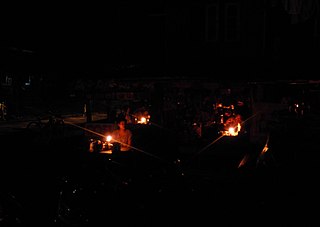
In Ghana, dumsor is a persistent, irregular, and unpredictable electric power outage. It is usually caused by a power supply shortage.

South Africa’s energy crisis or load shedding is an ongoing period of widespread national blackouts of electricity supply. It began in the later months of 2007 towards the end of Thabo Mbeki's second term as president, and continues to the present. The South African government-owned national power utility, and primary power generator, Eskom, and various parliamentarians attributed these rolling blackouts to insufficient generation capacity.

The Renewable Energy Independent Power Producer Procurement Programme (REIPPPP) is an initiative by the South African government aimed at increasing electricity capacity through private sector investment in solar photovoltaic and concentrated solar, onshore wind power, small hydro, landfill gas, biomass, and biogas. As of 2023, a total of 123 projects have been awarded to the private sector. Private sector investment totalling R256 billion has been committed to the REIPPPP. Four of the six Bid Windows have come online, totalling 6200 MW of installed capacity.

City PowerJohannesburg is a state owned power utility, wholly owned by the City of Johannesburg. Its responsibilities include buying electricity from power producers and supplying it to the public, and installing and maintaining the electrical infrastructure in the city of Johannesburg. It supplies electricity to 3.2 million people in the Greater Johannesburg Metropolitan Area.

The 2023 South African National Shutdown was a protest held by the political party Economic Freedom Fighters on 20 March 2023, the day before Human Rights Day. The EFF called for the resignation of President Cyril Ramaphosa and an end to load-shedding. The leader of the EFF, Julius Malema, warned businesses countrywide to close their doors or risk being looted by them.
References
- ↑ "Latest Blogs". Archived from the original on 2023-02-05.
- 1 2 Ferrybridge power stations
- ↑ "Firefighters tackle blaze near Shoreham Power Station". BBC News. 2 March 2012.
- ↑ Staff Writer. "Eskom loses three generation units — announces two nights of load-shedding" . Retrieved 2022-08-17.
- ↑ Staff Writer. "Eskom announces stage 2 load shedding on Tuesday – here is the schedule" . Retrieved 2022-08-17.
- ↑ Staff Writer. "Eskom announces load-shedding after breakdowns at two power stations" . Retrieved 2022-08-17.
- ↑ Staff Writer. "Eskom warns of stage 2 load shedding at short notice on Monday" . Retrieved 2022-08-17.
- ↑ Staff Writer. "Eskom warns of load-shedding at short notice as six units break down" . Retrieved 2022-08-17.
- ↑ Staff Writer. "Eskom warns of stage 2 load shedding at short notice on Wednesday" . Retrieved 2022-08-17.
- ↑ Illidge, Myles. "Eskom rescue plan hits first roadblock — Legal action against 3,000MW gas power plant" . Retrieved 2022-08-17.
- ↑ Bloomberg. "Blow to South Africa power supply" . Retrieved 2022-08-17.
- ↑ Staff Writer. "Eskom load-shedding strikes back" . Retrieved 2022-08-17.
- ↑ Staff Writer. "Eskom announces stage 2 load shedding – here's the new schedule" . Retrieved 2022-08-17.
- ↑ Staff Writer. "Eskom gives South Africa load-shedding breather — updated timetable released" . Retrieved 2022-08-17.
- ↑ Staff Writer. "South African energy crisis: the practical implications of the government's proposed interventions" . Retrieved 2022-08-17.
- ↑ Labuschagne, Hanno. "Expect at least 10 more days of load-shedding" . Retrieved 2022-08-17.
- ↑ Staff Writer. "Eskom ends load shedding sooner than expected" . Retrieved 2022-08-17.
- ↑ Staff Writer. "Eskom increases evening peak load-shedding stage — here's the new schedule" . Retrieved 2022-08-17.
- ↑ Staff Writer. "Eskom hopes to end load shedding next week – here's the new schedule" . Retrieved 2022-08-17.
- ↑ Mutele, Gladys. "Eskom announces Stage 2 load shedding from 4 pm until midnight". ewn.co.za. Retrieved 2022-08-17.
- ↑ Staff Writer. "Eskom reduces Friday power cuts — here is the updated schedule" . Retrieved 2022-08-17.
- ↑ Staff Writer. "Eskom moves to stage 6 load shedding – here is the schedule" . Retrieved 2022-08-17.
- ↑ Staff Writer. "Eskom announces all-day stage 6 load-shedding — with bad news for the weekend" . Retrieved 2022-08-17.
- ↑ Omarjee, Compiled by Lameez. "Halfway there as Eskom finally switches on Kusile's Unit 3". Fin24. Retrieved 2022-08-17.
- ↑ Vermeulen, Jan. "Stage 6 power cuts are here" . Retrieved 2022-08-17.
- ↑ Staff Writer. "Stage 2 load shedding continues on Wednesday and Thursday – here's the schedule" . Retrieved 2022-08-17.
- ↑ Illidge, Myles. "Eskom extends Stage 4 load-shedding" . Retrieved 2022-08-17.
- ↑ White, Ray. "Government announces immediate interventions to counter load shedding". ewn.co.za. Retrieved 2022-08-17.
- ↑ Illidge, Myles. "Eskom increases power cuts to Stage 4" . Retrieved 2022-08-17.
- ↑ Njini, Felix. "Eskom seeks partners for R1 trillion energy transition". Fin24. Retrieved 2022-08-17.
- ↑ Staff Writer. "Our plan to fix load-shedding cannot work if government does not get us capacity — Eskom" . Retrieved 2022-08-17.
- ↑ "Stage 1 load shedding on Wednesday (6 May)" . Retrieved 2022-08-17.
- ↑ Yell, Chris. "How to stop the worst load-shedding South Africa has ever seen" . Retrieved 2022-08-17.
- 1 2 "Eskom hopes to cease load-shedding in 10 days, Koeberg chief nuclear officer resigns". The Mail & Guardian. 2022-07-11. Retrieved 2022-08-17.
- ↑ Illidge, Myles. "Eskom's breakdown crisis in two charts" . Retrieved 2022-08-17.
- ↑ Labuschagne, Hanno. "Eskom's load-shedding disaster — From bad to worse" . Retrieved 2022-08-17.
- ↑ "Eskom stage 2 load shedding on Friday (26 June)" . Retrieved 2022-08-17.